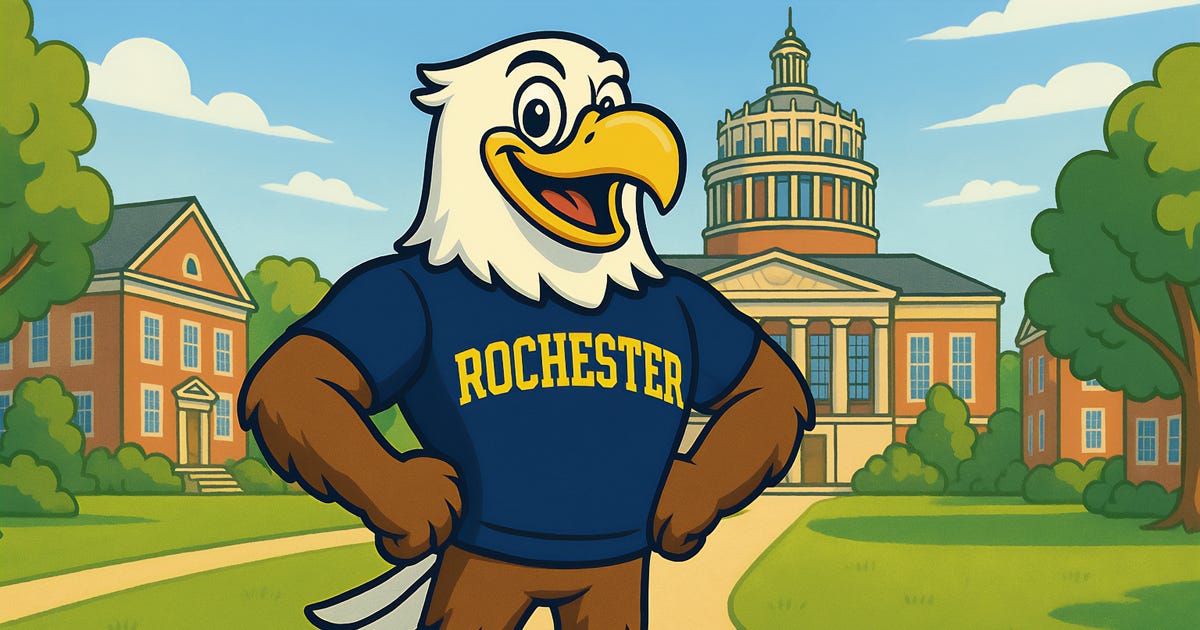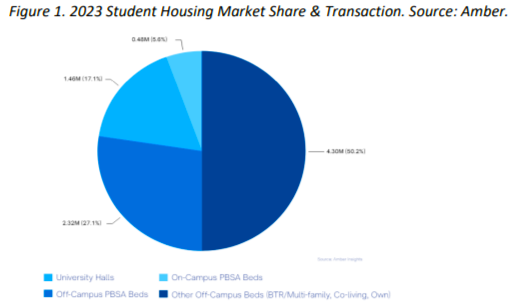A Different Kind of Student Housing Crisis 🎓🦅
What does amenitized housing mean to you?
Students often select public universities as a way to lower costs. Unfortunately, cheaper tuition doesn’t insure cheaper housing, especially these days. But first the news…
COLLEGE NEWS
Threats to student speech: College campuses have long represented incubators for expression and activism, but the current political climate has some schools silencing students. Case in point, recent administrative actions at Carnegie Mellon University have elicited outrage on both sides of the political aisle. Finally, a bipartisan issue.
Recommendations vary by school: Researchers algorithmically analyzed over 600,000 student applications and counselor recommendation letters submitted through the Common App and found tremendous variance. Private school letters are longer than ones from public schools, and socioeconomic status tends to work against an applicant. No, not even letters of rec are fair anymore.
Rochester represents the macrocosm: Many colleges are seeking a path through the perfect storm of cuts to federal funding, healthcare funding, and international student access. Leaders at the University of Rochester recently discussed the potential impact of recent changes to the institution and area community, striking a resolute and realistic tone. ROC on!
BIG IDEA
AAs the average American family seeks to balance economic uncertainty with the gamble that a college degree still opens doors to a better life, large public research universities have become more attractive destinations. But these institutions–even the respected state flagships–have been dealing with their own financial, cultural, and political challenges, forcing certain compromises in investment and expansion. One unfortunate consequence is that these schools are underinvesting in student housing, leaving private investors to pick up the slack:
Crisis by Design: Student Housing and the Hidden Cost of Higher Education, a new research publication from Shanshan Jiang-Brittan at UC Berkeley, diligently lays out the major factors at play:
Purpose-built student accommodation (PBSA) with features and services that go beyond the basic necessities now accounts for one-third of college housing nationwide.
The recent PBSA boom occurred despite a nationwide decline in college enrollment—from 21 million students in 2010 to 19 million in 2020.
The PBSA trend has transferred student housing control from local landlords to corporate entities with minimal local connections.
The financialization of student housing redefines what “affordable” housing means and warps local real estate values.
The author’s conclusion connects the dots of a dire image:
As higher education contends with declining public trust, it is time to look beyond tuition and reexamine one of its most significant hidden costs: housing. In recent years, public institutions have welcomed higher enrollments, particularly of out-of-state and international students, without corresponding investments in housing. Into this vacuum stepped the PBSA industry, offering private, luxury apartments near campus with the support of the global capital. The normalization of luxury off-campus PBSA fuels a student housing crisis that is not incidental, but by design. It also reflects a deeper commodification of college studenthood. The image of college life has shifted: no longer the frugal student in a modest dorm, but a consumer surrounded by rooftop terraces and pools. Student rents are structured to deliver returns to investors, not to meet student needs.
What does all this mean for current and future college students? Expect room and board to account for a greater portion of expenses, especially if you are forced to pay for luxury amenities. Pay attention to school policies and local housing options because your only choices may be pricey ones.
NAME THAT SCHOOL
This week’s institution of higher education just added a new leader. Can you name it? (Find the answer at the end of the newsletter.)
Founded in a church basement in 1867 and later named for a Baptist minister
The college’s motto is “Et Facta Est Lux” (“And There Was Light”), and social justice is central to its mission.
This all-men’s school is known for its distinctive culture, including formal dress codes for special events.
The College Glee Club has performed around the world, including for Presidents, the Pope, and even the Super Bowl halftime show.
Boasts many famous alumni, including civil rights icon Dr. Martin Luther King Jr.
APPLICATION ACTION STEPS
🎓 Learn about the Little Ivies.
🎓 Consider the case for the September SAT.
🎓 Catch up on admissions notes for the HS class of 2026.
🎓 Check out the timeline for new Federal Student Aid changes.
HOTLINE
Do you have any burning questions to ask or want to share an issue, article, or resource our readers should know about? Dial up the College Eagle hotline through this easy form. We appreciate you!
NAME THAT SCHOOL ANSWER
F. DuBois Bowman recently stepped up as the 13th president of renowned HBCU Morehouse College. Go Maroon Tigers!




